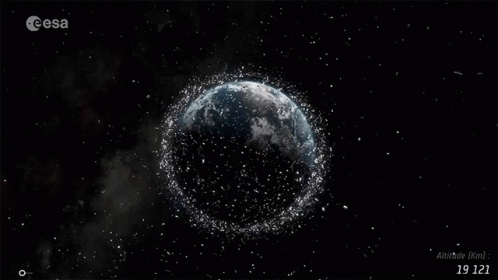Satellite Images beyond Google Earth
3/17/2022 written by Andreas Salentinig
Ever since the ubicube journey began in 2020, we have had the opportunity to discuss satellite data use-cases with a lot of different interesting people. Regardless of the industry these people are active in, we have heard them say the same statement over and over again: “Our team tried to use satellite imagery, but the images on Google Maps always lag behind and therefore don't have any value for us.” The permanent reoccuring of this sentence made me realize that for the general public, satellite imagery equals Google Maps.
Google Maps is without a doubt among the most fascinating technical achievements of our time. On a side note I can only recommend watching “The Billion Dollar Code”, a Netflix Mini series that illustrates how innovative the inventors of the underlying algorithms were, how challenging the development of such a system is and how much potential for commercialization it bears. Notwithstanding the controversial emergence of this technology, I think it's fair to say that Google Maps has changed the way we look at our planet.
However, due the sheer data amounts that would have to be processed and stored on a daily basis it is still not possible to provide a “live version” of Google Maps and therefore the images that are shown in the system are usually outdated. What most people don't know, is that modern satellite constellations actually allow us to get high resolution satellite imagery on a daily basis. The data are just not fed into a system to visualize them, but stored in the archives of satellite data providers. And these archives are growing at incredible rates. According to the Union of Concerned Scientists satellite database the number of operational Earth Observation satellites has grown from 192 in the year 2014 to 971 in 2021. That's a whopping increase of more than 500% in seven years!

While this trend will be even amplified in the future and the increased availability of satellite imagery will result in considerably lower data prices I feel like we are not even close to leveraging the full potential these data bear. But what can we do to change that?
Raise awareness! It is important that also people outside the “geospatial experts bubble” become aware of the possibilities modern Earth Observation satellite systems offer. To that aim the Austrian Federal Ministry for Climate Action, Environment, Energy, Mobility, Innovation and Technology (BMK) is -on a regular basis- organizing great events and hackathons (Space4Mobility, Space4Energy) that bring together experts from industries that could benefit from more and better space data and geospatial professionals. So far these events clearly demonstrated that their interdisciplinary setting is a very fruitful soil for creating meaningful use-cases of satellite data. We hope to see more of that in the future!
Facilitate access to satellite imagery! At the moment it is still too complicated to actually get the data you are interested in. The vast amount of satellite data providers offering data from a variety of different sensor systems can be overwhelming and you need some specific technical skills to access the data after purchasing it. This is a pity, especially because for some real world problems the solution would be to simply view a current satellite image (without any sophisticated algorithms applied on them). But the struggle of collecting the data keeps companies and organizations from using them. To counteract that problem we develop a customizable satellite image viewer that lets our clients get fresh birds-eye views of their areas of interest or even plan monitoring campaigns with full temporal and geographical flexibility. For more infos visit our dedicated page.
In conclusion, I think it's for sure that the increasing availability and quality of Earth Observation satellite data will improve business intelligence and will have a positive impact on our lives. But, in order to speed up that process it will be necessary to facilitate access to the data and to raise awareness that there are satellite images outside Google Maps just waiting to be explored and used!